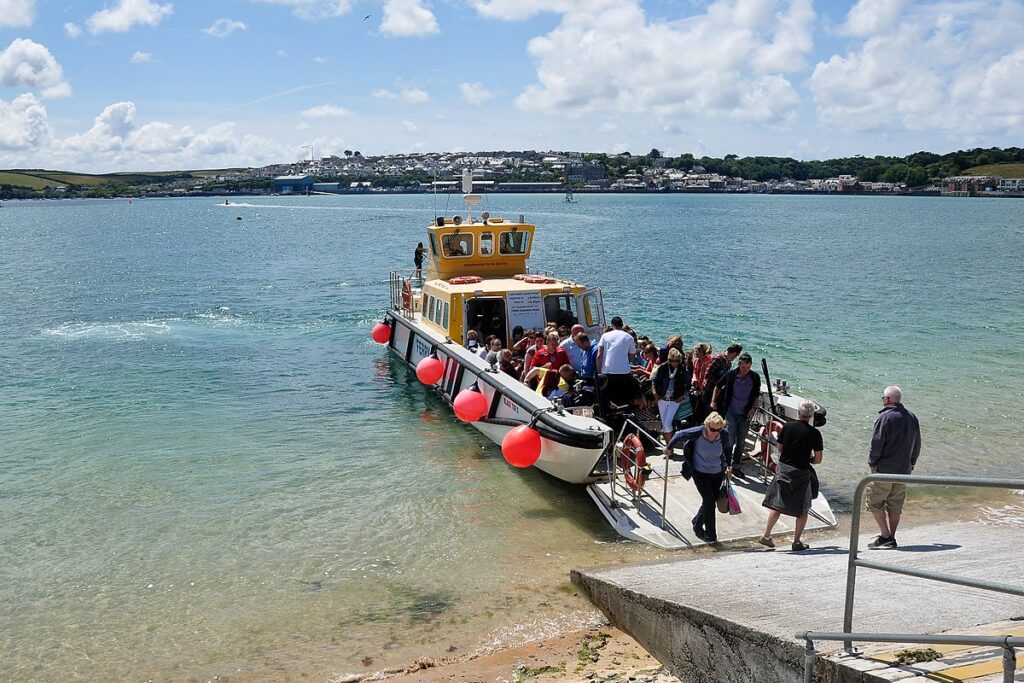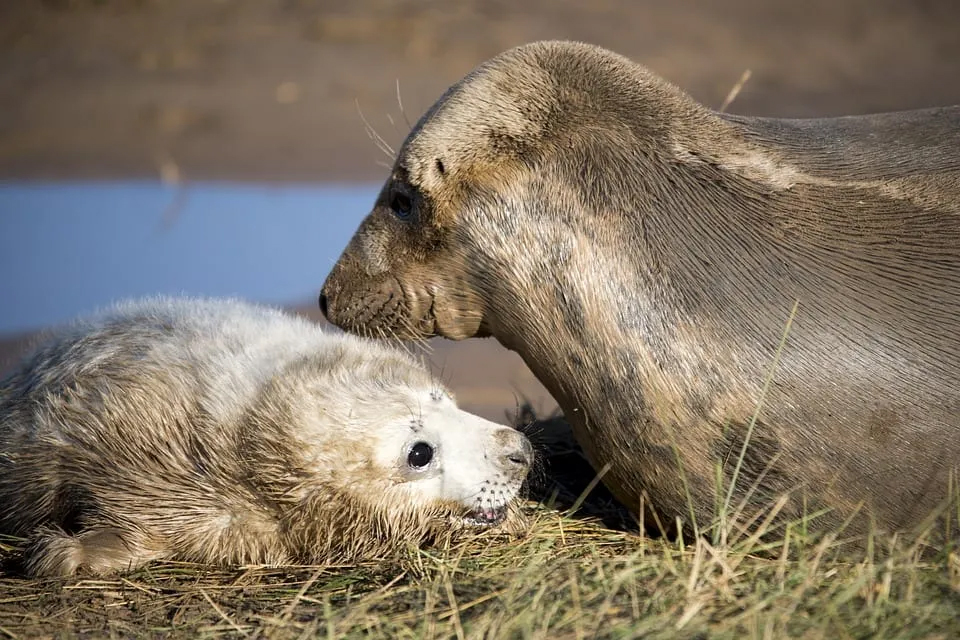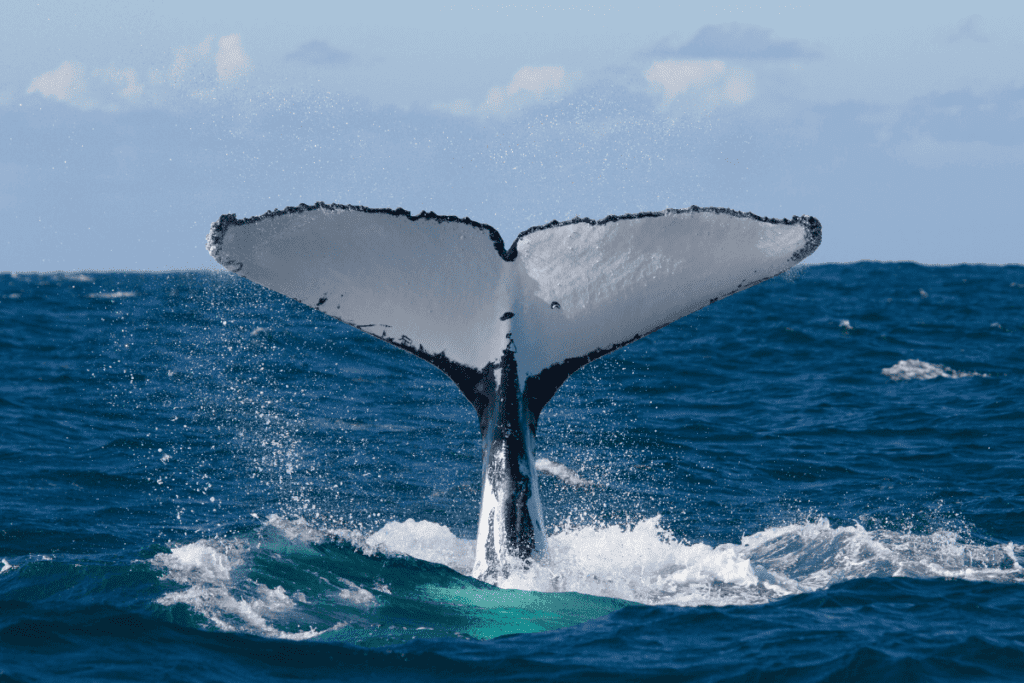Whale Strandings in Cornwall
Whale strandings are distressing and puzzling events in marine conservation, especially along the coastline of Cornwall, where such incidents are not uncommon. Seeing these magnificent marine mammals helpless on sandy beaches or among rocks raises important questions: why do whales get stranded, and what can we do about it?
While marine biologists investigate the complex causes, from navigational errors and illness to sonar interference and shifting tidal patterns, public awareness and timely action play a key role in understanding and responding to these events.
Let’s explore the causes of whale strandings and offer clear, practical guidance on what to do if you ever encounter a beached whale or other aquatic mammal.
Why Do Whales Get Stranded in Cornwall?
Whales strand in Cornwall for natural and human-related reasons, many of which are still being studied. The region’s rugged coastline, shallower waters, and strong tidal currents can disorientate large cetacean species. It can particularly affect those that rely on echolocation, such as pilot whales, beaked whales, and oceanic dolphins.
Sometimes, whales follow prey too close to shore or become trapped by rapidly falling tides. In other cases, underlying health issues such as disease, injury, or age-related weakness may contribute. Disoriented whales may also be affected by anthropogenic noise like mid-frequency active sonar from naval activity or military exercises, which interferes with their navigation.
Pollution such as plastic waste, polluted water, and entanglement in fishing gear can physically injure or weaken whales. In mass stranding events, highly social species like long-finned pilot whales and false killer whales may follow a single animal in distress, leading an entire pod of whales into danger. Cornwall’s position along key migratory routes and proximity to deeper waters make it particularly vulnerable to these incidents.
Stories from the Shore: Notable Strandings in Cornwall
One notable incident occurred on November 15, 2023, when a 16-metre fin whale was found dead on Fistral Beach, Newquay. The juvenile female had been seen near Pentire Headland the previous day. Upon examination, the whale showed signs of malnutrition, with a thin blubber layer. A post-mortem revealed infection with morbillivirus, a pathogen that causes brain inflammation and may have led to the animal’s stranding.
Such cases remind us of the vulnerability of even fresh whales in deep waters, and the need for ongoing scientific research and coastal vigilance.
Hotspots: Where Strandings Most Often Occur
Whale strandings in Cornwall frequently occur along exposed coastal areas, especially where deep ocean conditions meet steep coastal water drop-offs. Hotspots include St Ives Bay, Mount’s Bay, Newquay, and Padstow. These areas combine shifting tides, complex underwater geography, and choppy waves, which pose a challenge even for healthy animals.
Additionally, more remote and less developed areas may experience strandings that go unnoticed for longer periods, delaying intervention and rescue efforts.

The Role of Tides, Weather, and Human Activity
Tides, weather, and human activities all contribute to strandings. Shallow tides can trap whales in coastal waters, especially when compounded by unfamiliar or dirty waters. Sudden changes in weather, such as storms or shifts in barometric pressure, may disorientate even the most experienced marine navigators.
Meanwhile, noise pollution from shipping, underwater construction, or sonar pulses interferes with the whale’s ability to communicate, navigate, and feed. These sound waves, especially from naval exercises, can cause unusual behaviour in even larger species like sperm or baleen whales.
Meanwhile, pollution and fishing gear can physically harm or confuse them. Together, these natural and anthropogenic factors often converge to increase the likelihood of strandings, particularly in vulnerable or heavily trafficked marine regions.
Responding to a Stranding: What Happens Next?
If you find a stranded whale, dolphin, porpoise, or even a seal that appears injured or in distress, it’s crucial to act quickly and responsibly. Contact British Divers Marine Life Rescue (BDMLR) immediately.
When you call, be ready to provide the animal’s location, apparent size, species (if known), and observed behaviour. A photo can help marine mammal medics, animal rescue veterinarians, or other animal specialists assess the situation and act efficiently.
While waiting for help:
- Do not attempt to push the animal back into the water.
- Minimise disturbance and keep people and dogs away.
- If safe, stay nearby to monitor the animal.
- Follow BDMLR’s instructions.
If trained, you may help keep the animal upright, protect its blowhole, and cool it using buckets of water, but only with guidance. Your calm, informed response could help save a life.
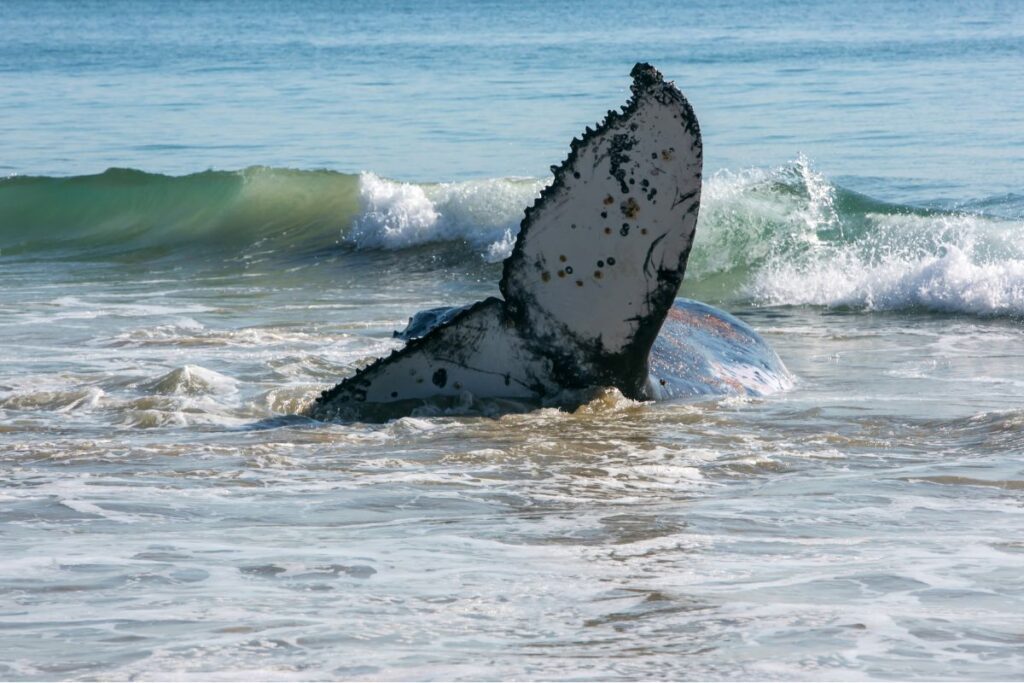
How You Can Help Stranded Whales
Training as a marine mammal medic with BDMLR provides vital skills to assist stranded marine animals, such as bottlenose dolphins, common dolphins, and beaked whales. With growing threats from noise pollution, climate change, and other human activities, hundreds of animals each year face these dangers along the UK coast.
The training includes:
- Practical instruction on stranding response
- Understanding the behaviour of whales
- Learning how to support healthy whales and those in distress
By joining BDMLR, you become part of a dedicated network protecting marine environments and responding to mass beachings or isolated cases of single whales in trouble.
What Whale Strandings Tell Us About Ocean Health
Whale strandings are vital indicators of marine ecosystem health. They can point to underlying stressors such as:
- Plastic ingestion
- Disease outbreaks
- Depleted food sources
- Changes in ocean temperature
- Underwater noise disturbances
Studying body size, body weight, blowhole condition, and internal health reveals much about the health of marine food webs. This data helps scientists detect and respond to broader environmental changes before they escalate further.
Protecting Our Coasts: Steps Toward Prevention
Protecting our coasts and preventing whale strandings requires a combination of science, policy, and public engagement. Key steps include reducing ocean noise pollution from shipping and naval activities, which can disorientate whales and interfere with their navigation. Implementing responsible fishing practices and reducing plastic waste helps create safer marine habitats. Monitoring whale migration patterns and improving early warning systems can allow for timely interventions when whales approach shallow waters.
Additionally, stricter regulations on pollutants and increased research funding support healthier ecosystems. Public education campaigns also play a vital role, raising awareness and encouraging communities to participate in coastal protection efforts.
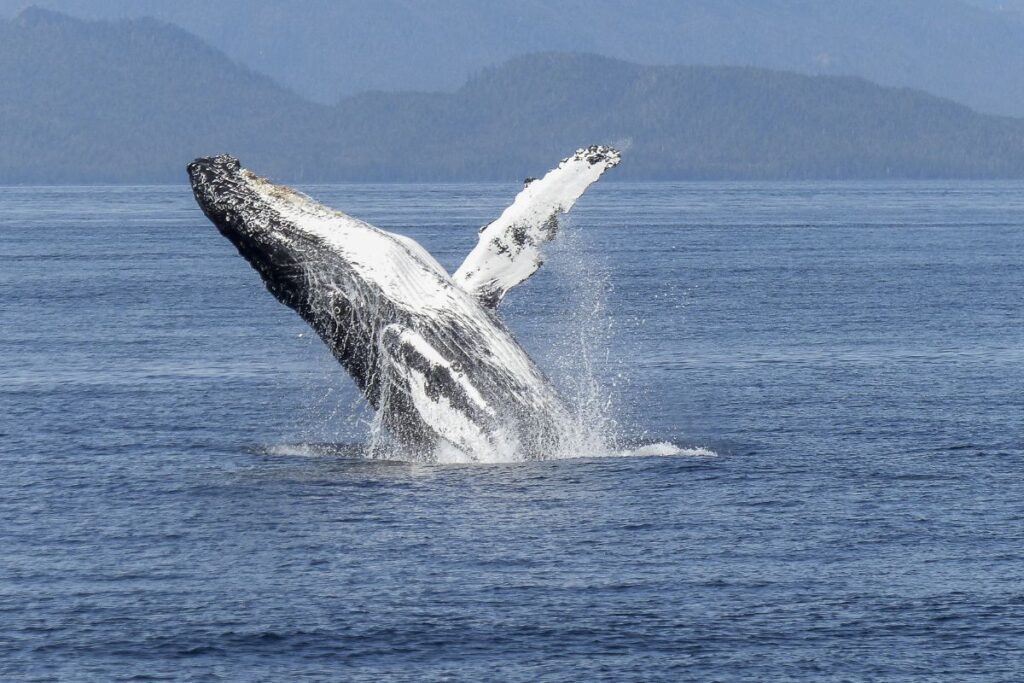
FAQs
What is a whale stranding?
A whale stranding happens when a cetacean (whale, dolphin, or porpoise) becomes stuck on a shoreline or in shallow waters, unable to return to the deep ocean.
Why do whales strand themselves?
Causes include navigational errors, illness, social behaviour, military sonar, and environmental stress.
Do stranded whales always die?
No. With prompt action from trained medics, some whales can be returned to the ocean, especially if found early and in good condition.
Are certain species more likely to strand?
Yes. Social species like pilot whales, beaked whales, and false killer whales are prone to mass strandings due to their strong social cohesion.
What happens to dead whales?
Depending on local policies, dead whales may be studied, buried, or towed to sea. Veterinary pathologists often perform necropsies to investigate causes.
What should I do if I see a stranded whale?
Call BDMLR immediately. Do not try to refloat the animal yourself.
